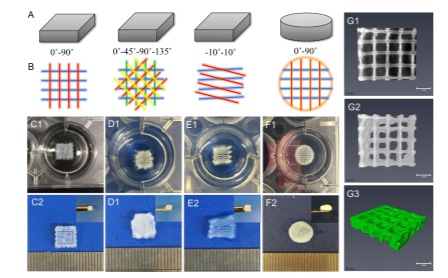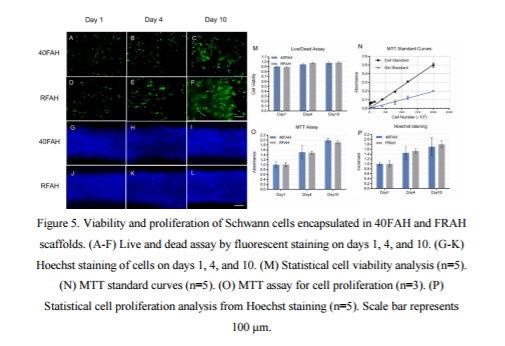Scientists in the Tissue Engineering Research Group at the University of Saskatchewan, Canada, have made progress in the treatment of damaged peripheral nerves using 3D printing. Their findings showed that 3D printed tissue scaffolds could be used to repair, or regenerate damaged nerves connecting the spine and the brain to the rest of the body.
Peripheral nerve trauma
The peripheral nervous system (PNS) is a network of nerves connecting the central nervous system to the entire human body. Damage to the PNS is among one of the most common forms of nerve trauma. Roughly 20 million Americans suffer from peripheral nerve damage, and up to 70% of diabetic patients have some nerve damage.
Currently, there are two methods used to repair damage to the nerves: nerve coaptation and autografts. But both methods have proved inadequate, as the gap between the damaged nerves may be too large, or the donor area could be disease prone. In such cases, the healing process is disrupted and surgery becomes necessary.
Scientists at Saskatchewan have shown that 3D printed Schwann cell-encapsulated tissue scaffold could be a viable alternative to the autograft technique used to treat damaged nerves.
Bioprinted tissue scaffolds
Tissue scaffolds are 3D printed structures that help facilitate the spread, migration, and proliferation of the cells. These support structures act as a bridge to fill the gap between the damaged nerves and promote the healing process. Such scaffolds have been developed before in this field, but their use remains limited due to currently available biomaterials and fabrication techniques.
At Saskatchewan, researchers concocted a composite hydrogel of alginate, fibrin, hyaluronic acid, and/or RGD peptide. The novel composite produced a low-viscosity solution and provided an ideal environment for sustaining live cells.

Using this material, the researchers employed an elaborate 3D bioprinting process to improve the quality of cell scaffold production. First, tissue scaffolds were 3D printed via extrusion using an EnvisionTEC Bioplotter, EnvisionTEC. Subsequently, the scaffolds were submerged for crosslinking and solidification of the hydrogel ingredients.
The scaffolds produced in this research proved to be mechanically more stable than the scaffold printed with previous hydrogel materials available and showed greater cell viability.
Schwann cells and nerve regeneration
To prove the material and method was viable for nerve growth, the researchers added Schwann cells to the 3D bioprinted scaffolds. Schwann cells are any of the cells in the peripheral nervous system which promote axonal regeneration. An axon is a thin, long, thread-like nerve through which information travels to neurons, muscles and glands, in the form of electrical impulse. In case of damage to the nerves, Schwann cells promote repair and recovery of the axons.
Results showed that the Saskatchewan material formulation and method promotes alignment of Schwann cells inside the scaffold and greater cell viability: “more than 89% of cells were alive in both the 40FAH and FRAH scaffolds at day 1, and this number increased to over 95% by day 4 and 10”.

3D printed cells and brain disease
Use of 3D printing technology is not new in the field of biomedicine or neuroscience. 3D printed cells have been developed which could restore heart health after damage sustained by a heart attack. 3D bioprinting has also created an opportunity to better understand the causes of brain disease.
The research discussed in this article is published online in Biofabrication journal, in a paper titled “3D bioprinting of scaffolds with living Schwann cells for potential nerve tissue engineering applications.” It is co-authored by Liqun Ning, Haoying Sun, Tiphanie Lelong, Romain Guilloteau, Ning Zhu, David J Schreyer and Xiongbiao Chen.
Subscribe to our newsletter for news related to bioprinting, or follow us on Twitter and Facebook. Want to work in 3D printing industry? Please visit our job site.
Featured image shows human central nervous system. Photo via PathLabs Ltd

